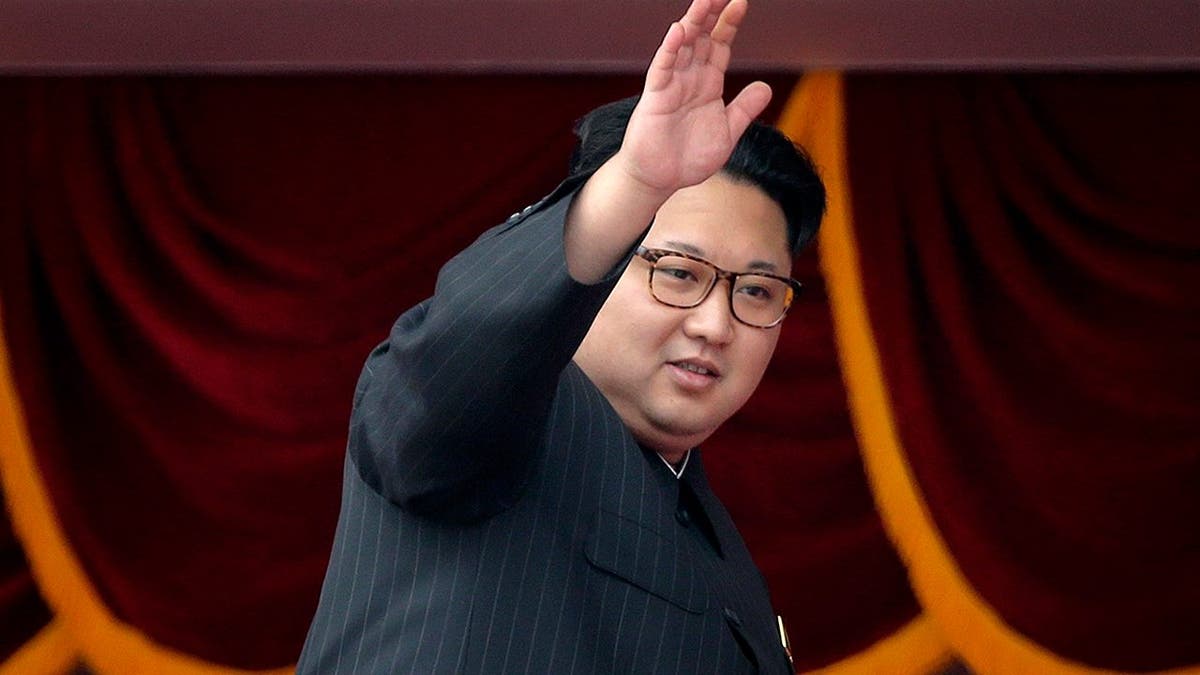Kim Jong Un wanted to be back 'on everyone's radar': Lt Gen Jerry Boykin
Retired Lt. Gen. Jerry Boykin joined 'Your World' to weigh in on North Korea firing a missile over Japan.
SEOUL, South Korea – North Korea launched two short-range ballistic missiles toward its east coast on Sunday. It was the 23rd round of its ballistic missile tests this year and the seventh round since Sept. 25. With the tests, analysts are busy working on the reasons why Kim Jong Un has stepped up his actions.
"North Korea sees the United States as the biggest military threat, thereby excluding the U.S. on the Korean Peninsula is North Korea’s biggest security goal," said Yang Wook, an associate research fellow at Asan Institute for Policy Studies in Seoul. Yang also added that North Korea might feel threatened by the deployment of the USS Ronald Reagan in the eastern waters of South Korea, provoking more missile launches to respond to the South Korea-U.S. joint military exercises.
In the wake of the North’s resumption of its long-range ballistic missile test, the United States redeployed its nuclear-powered aircraft carrier USS Ronald Reagan in the waters off South Korea’s east coast last week. It was deployed in late September for joint military drills with the South Korean navy, marking the first South Korea-U.S. joint military drill involving the aircraft carrier since 2017.
NORTH KOREA'S KIM JONG UN OVERSAW TACTICAL NUCLEAR MILITARY TRAINING

Kim Jong Un waves at parade participants at Kim Il Sung Square in Pyongyang, North Korea, on May 10, 2016. (AP Photo/Wong Maye-E, File)
Since President Biden took office, North Korea has tested its advanced ballistic missiles, including its intercontinental ballistic missile (ICBM), submarine-launched ballistic missile (SLBM), and hypersonic missile.
Under Kim Jong Un’s self-moratorium on his ICBM and nuclear tests, North Korea had not tested such powerful ballistic missiles from 2018 to 2019, when Kim was negotiating with former President Trump and then-South Korean President Moon Jae-in. However, since Trump refused to accept Kim’s offer to denuclearize his country with the partial lifting of the devastating economic sanctions in the Hanoi summit in 2019, Kim publicly nullified his self-moratorium and resumed testing his powerful missiles.
Since then, North Korea has again been isolated from the international community. Washington and Seoul have consistently reached out to Pyongyang to restore the deadlocked nuclear talks, but it has remained silent and tested missiles repeatedly. While it's not necessarily surprising to see North Korea firing missiles toward its east coast, observers are seeking to answer why it conducted the seventh round of ballistic missile tests in the last two weeks.
The main rationale for the recent series of the North’s missile launches is connected with the joint military drills between the United States and South Korea.
Korean Central News Agency (KCNA), one of North Korea’s main state-controlled media, reported on Monday that Kim Jong Un guided the drills of the units of the Korean People’s Army for the operation of tactical nuclear weapons.
NUCLEAR-POWERED US CARRIER JOINS SOUTH KOREA WARSHIPS FOR DRILLS AFTER NORTH KOREA MISSILE LAUNCHES

The USS Ronald Reagan participates in the Rim of the Pacific (RIMPAC) Exercise 2014, along with ships from 15 other nations. (iStock)
"The busy military moves of the enemies are being focused at this time, too, and such the U.S. and the South Korean regime’s steady, intentional and irresponsible acts of escalating the tension will only invite our greater reaction, and we are always and strictly watching the situation crisis," Kim was quoted as saying in the KCNA report.
Kim also said he has "no content for dialogue with enemies and felt no necessity to do so" as Seoul and Washington have posed "military threats" to his country while talking about "dialogue and negotiation."
"We would sharply watch the instable security circumstance on the Korean Peninsula and all military moves of the enemies, which cannot be overlooked, and strongly take all military countermeasures if necessary," Kim said.
Korean Central News also published a press statement from a spokesperson from the Ministry of National Defense on Oct. 8.
The spokesperson called the redeployment of the USS Ronald Reagan "an event of considerably huge negative splash to the regional situation" and said its military is "seriously approaching the extremely worrisome development of the present situation."
WHAT DOES NORTH KOREA'S KIM JONG UN WANT FROM THE BIDEN ADMINISTRATION?

Kim Jong Un addresses North Korea's parliament, which passed a law officially enshrining its nuclear weapons policies, in Pyongyang, North Korea, Sept. 8, 2022. (KCNA via Reuters)
Pyongyang has deemed the joint military drills between South Korea and U.S. as rehearsals for "invasion." It is also one of the so-called "hostile policies" that North Korea has demanded the U.S. end.
The North’s missile test on Sept. 25 was conducted a day before the South Korea-U.S. joint navy drills involving the USS Ronald Reagan kicked off. In light of its ballistic missile launches as a "tit-for-tat" measure against the drills, North Korea will likely show off more advanced missiles when the scale of the exercises expands.
Apart from its Sept. 4 intermediate ballistic missile launch, all the others have been SRBMs. Considering the range of the SRBMs, they were not targeting the U.S. mainland. However, that doesn't mean North Korea is not threatening the security of the United States.
"Taking South Korea, Japan and Guam hostages of its tactical nuclear weapons is the primary goal of North Korea’s missile tests," said Park Won-gon, a professor of North Korean Studies at Ewha Womans University in Seoul.
Park also added that North Korea is trying to balance its asymmetrical nuclear capabilities with the U.S. by developing its tactical nuclear weapons, rather than possessing the capabilities of its strategic nuclear weapons to target the U.S. mainland.


